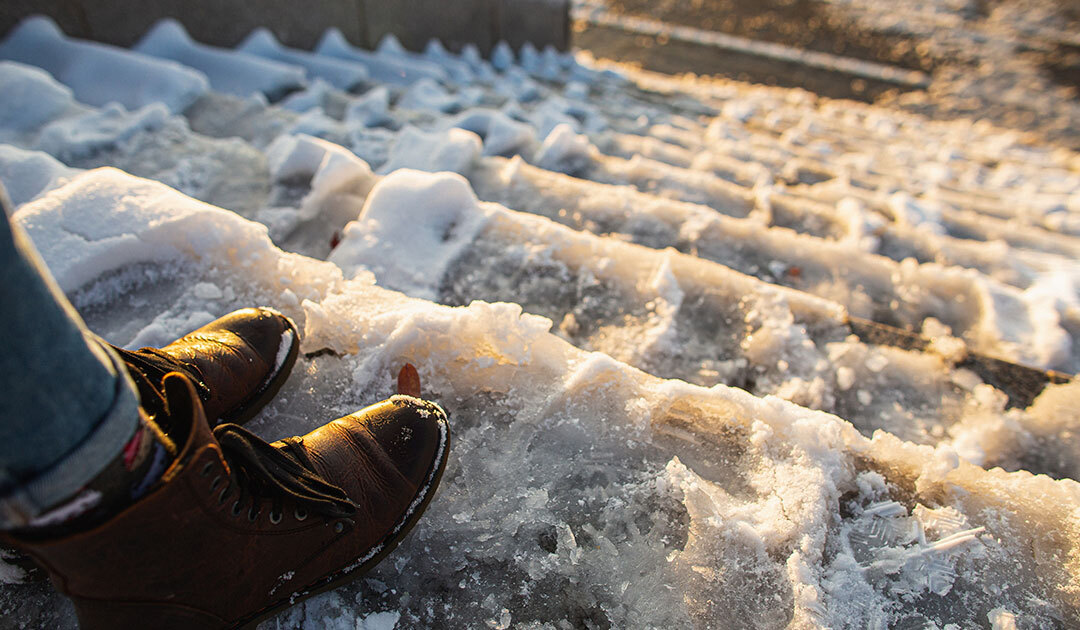
There comes a point in every adult’s life when a “snow day” isn’t all about ice-forts and sledding. No, the grown up winter wonderland includes shoveling, snow blowing, and icy, unsteady walkways. With all that ice, winter-related injuries can happen even if you’re careful, and one hard fall can knock you out cold. Here are some ways to stay safe this winter, including how to take care of wintery bumps and bruises when you do slip up.
Ice can be hard to spot – if you miss it, you may be doing an unexpected triple-axle (with a not-so-pretty landing). Slipping on ice is one of the most common winter injuries. According to the CDC, about 1 million people get injured due to slipping and falling on the ice every year. Avoid being one of them by following these tips for staying safe in slippery conditions:
Often, slipping and falling results in no more than an embarrassing, slapstick moment. And you can treat minor bumps and bruises like these with the cause – ice! Elevate the injured area and apply a cold compress to help reduce swelling. For minor abrasions, gently clean the wound with soap and lukewarm water, apply antibacterial ointment (like Neosporin), and a bandage.
However, some falls may result in more serious injuries, like:
Hitting your head on the ice can lead to a concussion or even a Traumatic Brain Injury (TBIO). And remember, waiting too long for treatment is a slippery slope. If you are concerned your injury may be an emergency situation, head to your local urgent care or to the emergency room right away.
Just because you’re a grown up doesn’t mean that you can’t have fun in the snow! Skiing, snowboarding, and ice skating are just a few of the fun wintertime activities you might enjoy. But even if you’re enjoying yourself, spending a lot of time outside can put you at risk for injuries and conditions caused by exposure to cold temperatures.
Frostbite, dehydration, hypothermia, not to mention the normal bumps, bruises, breaks and concussions that may occur during wintertime recreations. Stay safe by remembering to:
vybe is here to catch you when winter weather knocks you off your feet. With on-site x-rays and clinicians skilled in wound care, fractures, and muscle injury treatment, our urgent care centers are ready to handle most minor winter-related injuries. Remember that prompt medical care is important to ensure proper healing of your injury, so visit your local vybe to feel better.
FIND YOUR VYBE